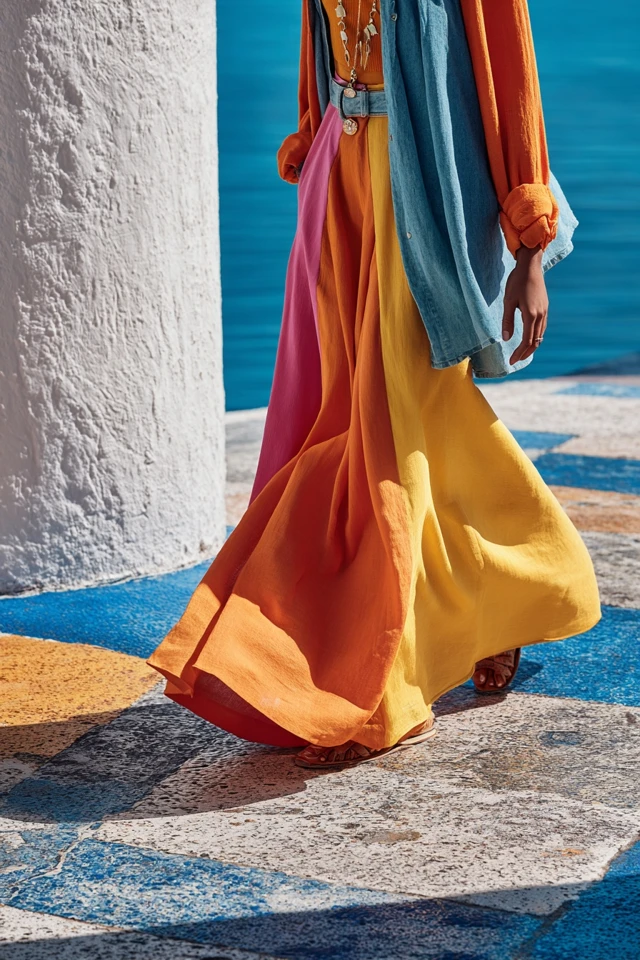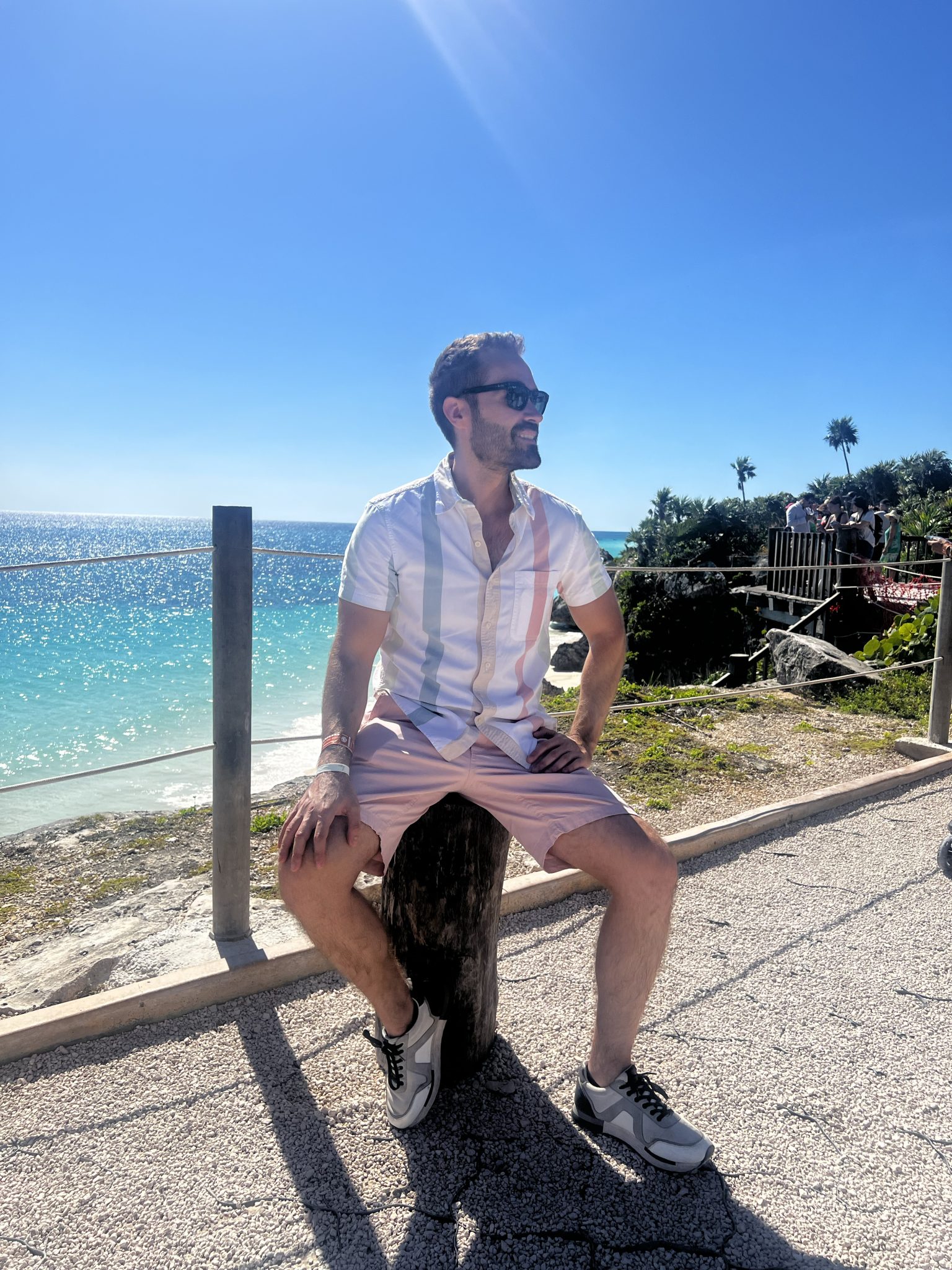Introduction
One summer afternoon, I found myself standing in front of my wardrobe, wondering how to keep my outfit both cool and polished under the blazing sun. The challenge was real: layered dressing, often reserved for cooler seasons, felt like a paradox during summer. Yet, with the right fabrics and colors, I discovered that layering could not only be comfortable but also elevate my style and confidence. This insight transformed my approach to seasonal dressing and has since become an essential part of my fashion philosophy.
Layered summer basics are more than just a practical solution to fluctuating temperatures—they’re an art of balance. They combine texture, transparency, and structure in a way that protects against the sun while allowing air to circulate freely. But beyond functionality, these layers communicate personality, mood, and presence, making careful fabric selection and color harmony vital for crafting memorable summer looks.
About the Author and My Trend Boutique
Understanding the interplay between fabric, color psychology, and personal style is crucial to mastering this approach. Whether you’re heading to a casual brunch or an outdoor meeting, your layered summer basics can boost your confidence and influence how others perceive you. This post delves deeply into this topic, drawing from fashion research, trend forecasting, and my own academic background to offer a comprehensive guide to layering with intention and style.
Foundational Concepts
Before diving into fabric choices and styling tips, it’s important to establish some foundational concepts that shape how we approach layered summer fashion.
Color Psychology in Fashion
Color psychology explores how hues influence mood, behavior, and social perception. In fashion, color choices impact how we feel in our clothes and how others interpret our persona. For instance, blues tend to evoke calmness and reliability, while reds are associated with energy and assertiveness. These psychological responses are backed by empirical research and influence everything from branding to everyday style decisions.
My early studies in color psychology revealed how subtle shifts in color palette can dramatically alter the emotional tone of an outfit. Choosing pastel layers can convey softness and approachability, while saturated jewel tones often signal confidence and creativity. Understanding these nuances enables intentional dressing to impress and connect better in social and professional contexts.
Trend Forecasting and Its Role
Trend forecasting involves predicting future fashion directions based on cultural shifts, technological advances, and historical cycles. In summer basics, this means anticipating which fabrics and color themes will dominate, allowing you to invest wisely and stay stylish without chasing every fleeting fad.
For example, breathable natural fibers like linen and Tencel have surged in popularity due to rising environmental consciousness—an insight that helps me recommend sustainable layering options that remain timeless. Forecasting also highlights how classic cuts adapt seasonally, ensuring your layering pieces stay relevant.
Dressing to Impress
‘Dressing to impress’ is about more than superficial appearance—it’s a strategy that harnesses clothing to impact confidence and first impressions. Research from social psychology underscores the “enclothed cognition” effect, where what you wear directly influences your mindset and productivity.
For summer layering, this means choosing fabrics and colors that not only look chic but also feel comfortable and empowering. When your clothes suit both the environment and your personal style, you naturally exude poise and ease, making any encounter smoother and more memorable.
Picture Gallery
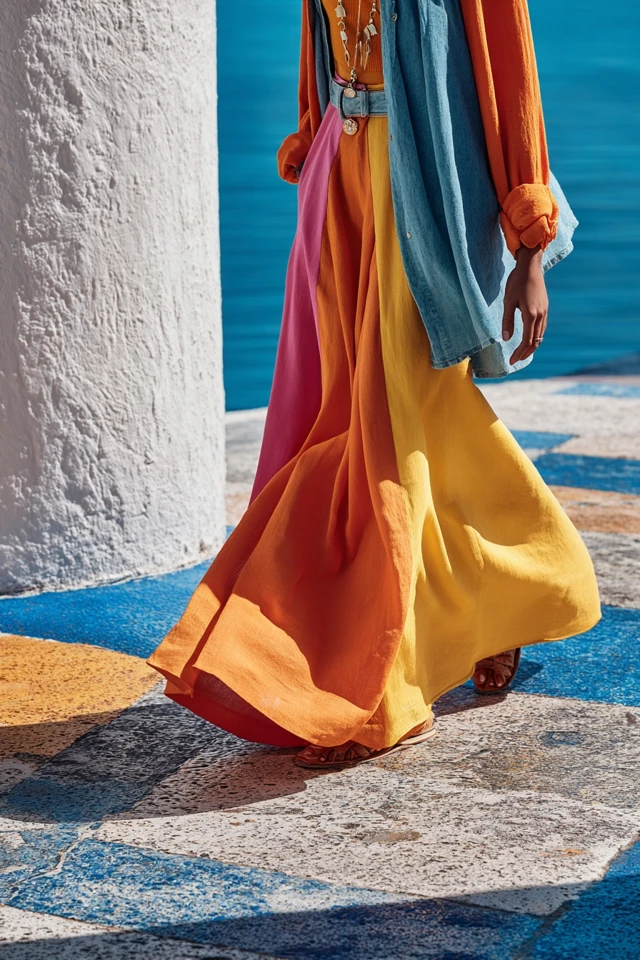
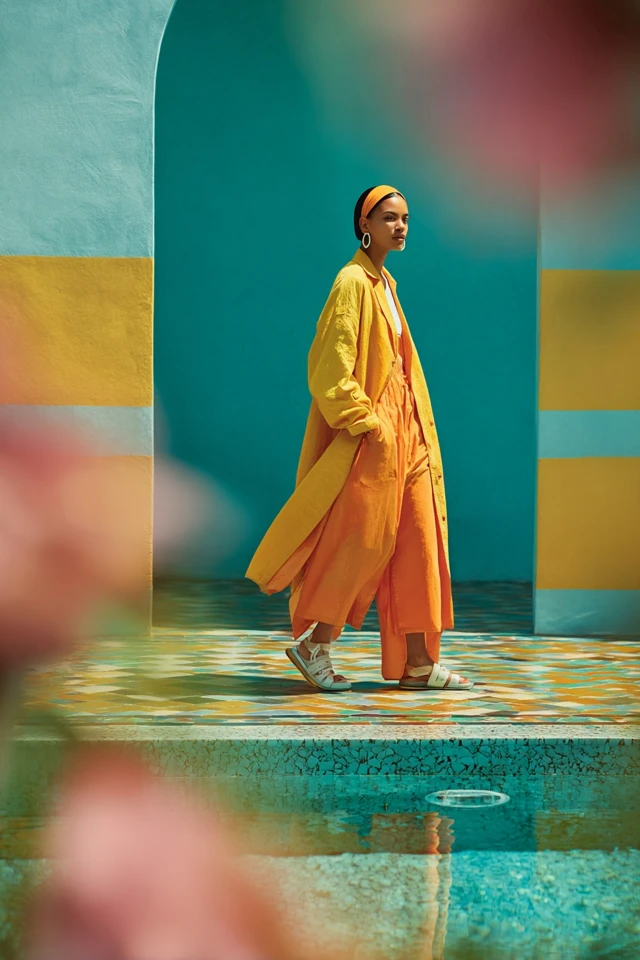

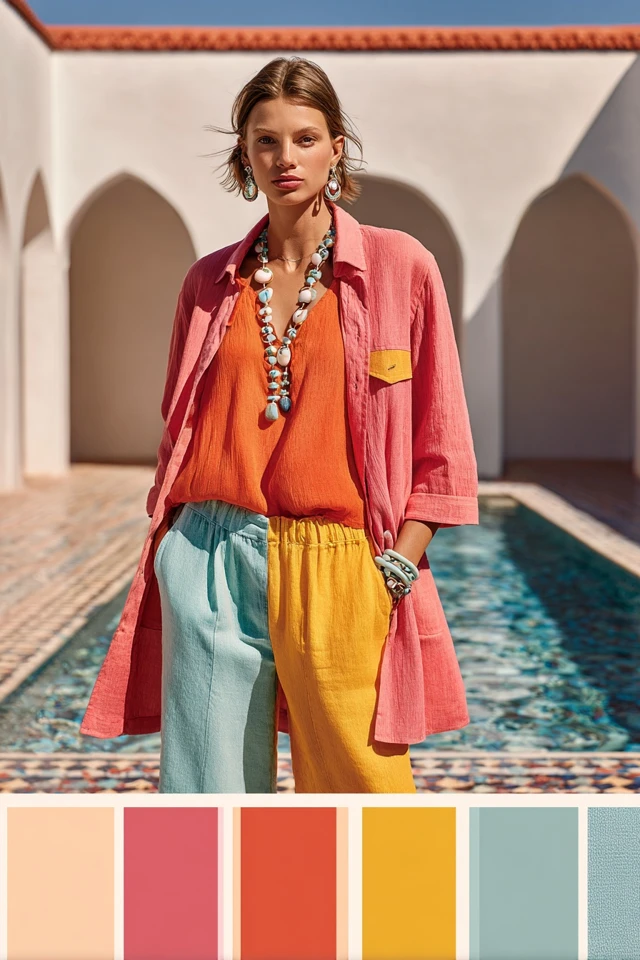
Color Psychology & Emotional Impact
Colors possess an extraordinary ability to influence emotions and perceptions, particularly in summer dressing where vibrancy and subtlety coexist. Scientific studies link color exposure to neurotransmitter responses that affect mood and cognition. In a fashion context, this means the colors layered next to your skin can calm anxieties, boost energy, or cultivate warmth.
For example, layering whites and creams can evoke purity and freshness—ideal for daytime events. These hues reflect light, keeping you cooler physically and conveying an aura of ease. On the contrary, deep earthy tones such as terracotta or olive ground your look with stability and warmth, inviting feelings of comfort and connection.
First-impression science further supports these choices. Research reveals that people form judgments about trustworthiness, competence, and sociability within seconds based largely on color cues. Wearing thoughtfully layered summer basics in colors aligned with your goals—be it networking, relaxation, or celebration—can subtly signal your intent and personality before you even speak.
Consider keeping a capsule palette of “power” colors that resonate with your emotional needs and the social situations you encounter often. Using visual aids like color swatches to explore seasonal RGB variations or Pantone guides can help build a harmonious, mood-enhancing wardrobe foundation.
Personal Style & Body Type Considerations
Layered summer basics should celebrate your unique body shape and complexion, enhancing your best features rather than hiding them. Here are some tips aligned with both silhouette and coloring:
- Hourglass: Opt for lightweight fabrics like cotton voile or chambray that drape softly, highlighting your waist with fitted layers and flowy outer pieces. Stick to monochromatic or analogous colors for elongation and balance.
- Rectangle: Create curves with structured layers such as a tailored linen blazer over a soft tank. Add contrast through layering different textures and shades to define your silhouette.
- Pear: Draw attention upwards using lighter tones or subtle prints layered around your shoulders. A flowing tunic over slim trousers balances proportions while keeping you breezy.
- Apple: Choose drapey fabrics like silk blends for tops to skim over the midsection. Layer strategically with open cardigans or kimonos that provide vertical lines and lengthen your torso.
Complexion also guides color and layering choices:
- Cool undertones: Opt for blues, purples, and soft pastels layered with neutrals like gray or navy.
- Warm undertones: Embrace earth tones such as peach, coral, olive, and buttery yellows.
- Neutral undertones: Enjoy versatility with most hues—try balancing bright layers with muted basics.
Quick Quiz: Find Your Layering Sweet Spot
- Do you prefer structured or flowing fabrics in the heat?
- Which colors make you feel most confident outdoors?
- How do you usually layer—minimal or multi-layered?
- What summer activities require your outfit to adapt?
- Do you tend to accessorize or keep it simple?
Answering these questions can help tailor your layered summer basics to fit both lifestyle and personal style harmony.
Current Trends & Timeless Classics
The fashion industry’s current trends reflect a blend of sustainability, comfort, and nostalgia. This season, expect to see:
- Natural and sustainable fabrics: Linen, organic cotton, and Tencel continue to dominate, prized for breathability and eco-friendliness.
- Earthy pastel palettes: Soft sage greens, muted corals, and sandy neutrals mixing with crisp white basics.
- Effortless tailoring: Lightweight blazers, relaxed trousers, and shirt dresses perfect for layered looks.
- Sheer and mesh overlays: Offering dimension and texture without added heat.
Timeless classics remain integral for a balanced wardrobe. Invest in quality white tees, linen button-downs, and versatile denim as foundational layers. These staples can be refreshed seasonally by adding trending accessories or complementary colors—ensuring longevity and adaptability without sacrificing style.
Combining these elements allows you to experiment confidently while retaining a polished, seasonally appropriate appearance.
Practical Tips & Recommendations
Building a layered summer wardrobe that feels fresh and functional requires keen shopping and care strategies. Here are actionable recommendations:
- Shop smartly: Focus on fabrics labeled breathable, moisture-wicking, and lightweight. Avoid synthetic blends that trap heat unless blended with natural fibers.
- Layer light: Thin, semi-sheer layers add dimension without bulk. Consider camisoles, lightweight cardigans, and loose scarves.
- Color combos to try now: Pair a cream tank with sandy linen pants and a pale blue overshirt. Or combine soft peach with olive layers for warm sophistication.
- Accessories: Incorporate hats, minimalist jewelry, and leather or woven belts to elevate the look while maintaining comfort.
- Wardrobe maintenance: Hand wash or use gentle cycles on delicate fabrics to retain breathability and structure. Store folded or hung with protective covers to avoid wrinkles and stretching.
By layering with intention—balancing color, texture, and silhouette—you can confidently navigate summer’s heat and social demands with style that uplifts and endures.
FAQs
Q1: How can I discover my signature color for summer layering?
A: Start by analyzing your skin undertone and daily mood preferences. Experiment with a curated palette of colors—observe which hues receive compliments or make you feel energized. Online tools and color consultants can offer personalized guidance.
Q2: What’s the best way to update my summer wardrobe on a budget?
A: Focus on accessory swaps, layering staples like lightweight cardigans, and versatile basics you can restyle. Thrift shopping sustainable fabrics or investing in capsule pieces also prolongs wardrobe value.
Q3: Can layered basics work for professional summer settings?
A: Absolutely. Opt for breathable, structured fabrics like cotton-poplin shirts and lightweight blazers. Neutral color layers paired with modest accessories create polished, seasonally appropriate office wear.
Q4: How do I build a minimalist summer capsule wardrobe?
A: Select 10–15 versatile pieces focused on natural fabrics and complementary neutrals with a few accent colors. Prioritize quality and mix textures to create various looks with limited layers.
Q5: Are there fabrics I should avoid layering together in summer?
A: Avoid combining heavy synthetics like polyester with natural fibers as they can trap heat and cause discomfort. Similarly, multiple opaque layers may restrict airflow. Opt instead for varied transparencies and breathable blends.
Conclusion
Layered summer basics are a nuanced way to approach warm-weather dressing that balances practicality with expressive style. By understanding fabric performance, color psychology, and your body’s needs, you empower yourself to dress not just to withstand heat but to communicate confidence and individuality.
Embrace experimentation by blending current trends with timeless classics, tailoring layers to your unique body and personality. Fashion is a dynamic dialogue between who you are and how you want to be perceived—let your summer layers start the conversation with warmth, sophistication, and ease.
I invite you to share your own layering experiences, questions, and favorite color combos in the comments below. For more insights on style, color psychology, and dressing to impress, subscribe and join our fashion-forward community learning to wear confidence beautifully every day.

